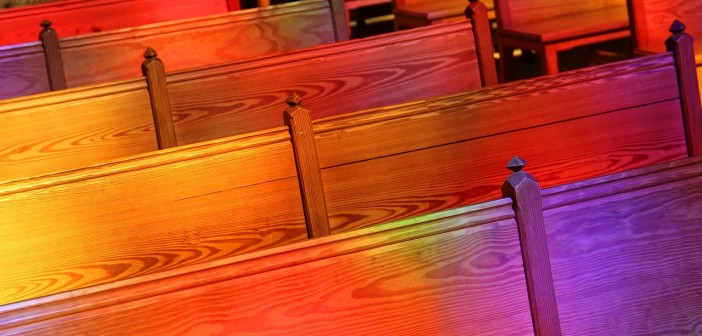I have served as pastor of small, mid-size, and large churches. And some of them grew, especially the larger ones. Large churches that grow larger are exciting to serve and provide great stories of success. But 75 percent of churches in the United States and 95 percent in some countries are small and don’t grow rapidly if at all. So what do we say about them? Are these small churches the unavoidable casualties of some invisible force at work: survival of fittest (Herbert Spencer), the invisible hand of free market economy (Adam Smith), or hold-outs from the march of progress — Luddites in an age of Blackberries and hybrid cars?
The drama of a small church is not the drama of growth goals hit or missed, but the drama of endurance — of keeping the faith against incredible odds over extended periods of time.
I have looked everywhere for better scripts for small churches than such fatalisms. What about a small family business that has no intention of making the Fortune 500 list, but thrives on direct communication, focused product, hands-on leadership, quick adaptability, and loyal workers, while it strives toward the goal of being passed on to the next generation at about the same size?
What about British anthropologist Robin Dunbar’s number theory? This theory posits that the optimum social group size among humans (determined by the size of the neocortex section of the brain) is 100 to 150. That’s the number of persons with whom one can have stable, intimate relations. It is the best size for communication, for sympathy, for loyalty, for mutual help and trust, and, therefore, the best size for a military company, a village, a nomadic tribe, a social networking website, or an office. And of course, as validated repeatedly in history, if it is not the best size for a congregation, it is at least a very common size.
What about Pfoutz Valley Church? This little church sits at the end of the slate Township Road 549 and has had about 90 members in four generations for at least 150 of the 200 years of its existence. It has been true to its theological identity and has been creatively adapting to changes in its environment. Is that a 150-year-old script of never quite taking off as it should have? Of not being all it could be? Really? Can’t we imagine a better interpretation than that?
I use the phrase “dynamic equilibrium” to describe a better script for many small churches. A church in such healthy equilibrium:
- Is multi-generational because the faith is not just for the present generation (Gen 15:5-6; 2 Tim 1:5)
- Applies the church’s own metrics of vitality and faithfulness, such as its capacity to hold diverse persons in a unity of purpose (“the church is one”)
- Cherishes its corporate story but wants to write a new chapter
- Creatively adapts to changes in its environment rather than closing itself off from change
- Grows in members and stewardship at a pace that offsets losses and increased demands
The drama of a small church is not the drama of growth goals hit or missed, but the drama of endurance — of keeping the faith against incredible odds over extended periods of time.
In addition to my teaching, these days I am a pastoral leader trying to help Arnold’s Church in Dillsburg, Pennsylvania, find its proper script. We have a rich history. Sometimes we pull a nugget from our history to lift our spirits. But what we most want to figure out is what story are we in now? What plot are we trying to advance? Is the next faithful step in this direction or that direction? I think all of us agree that the pressing work of our life together comes down to our mutual commitment to a few basic acts: Show up. Accept the part that is given you. Play it hard. Don’t look down or back too long. It is drama enough for us.






